Meet Rushikesh Chavan
First published in Sanctuary Asia,
Vol. 41
No. 8,
August 2021
With extensive experience working on ecosystem and species conservation across 19 states, Rushikesh Chavan heads The Habitats Trust, which collaborates with organisations and individuals to protect India’s biodiversity and threatened wild habitats. In the process, he believes, the quality of life and security of marginalised communities will be greatly enhanced. Lakshmy Raman, Executive Editor, Sanctuary Asia, speaks with him about his inspirations, the need to focus on lesser-known species and The Habitats Trust’s long-lasting stewardship plans for the planet.
You have been enmeshed in conservation for over two decades. How did you get interested?
As a student in the late 90s and a vagabond eager to skip classes, I would wander about Mumbai. One day I ended up under a tall tree – a Mitragyna atop a hillock overlooking the Arabian sea. Something about that moment made me introspect about why I was born, and some inner resolve compelled me to dedicate my life to nature conservation. And as I became more involved in conservation, it engulfed me completely.
Who were your major influences?
Several people. I travelled to forests with my friend Nitin Chitroda. I met and worked with multiple wildlife and conservation experts – Deepak Apte of the Bombay Natural History Society who let me volunteer with the organisation, Bittu Sahgal who infused his zeal into me, the late J.C. Daniel, Gretchen Daily, Janine Benyus and so many more whose wisdom guides me to this day. I have also been influenced by economists such as Neeraj Hatekar and conservation psychologist Vivek Belhekar who helped broaden my perspectives. Colleagues and peers, some of them in their 20s, inspire me daily.
Your work at the BNHS and then the Wildlife Conservation Trust is well known. What prompted your move to The Habitats Trust (THT)?
The expanded conservation opportunity across the globe. My work with the Wildlife Conservation Trust was very satisfying, but when I received a call from THT and heard Roshni Nadar Malhotra’s vision, it instantly struck a chord. The opportunity to help turn her vision into reality was irresistible, as it aims to scale long-term conservation initiatives, through collaborations with organisations and individuals… in a Fibonacci sequence manner. The technological strength of HCL can help fill gaps and create deep understanding of our conservation challenges, with curated rather than rubber stamp solutions. I believe we can and will knit the fraternity closer to the advantage of our biosphere.
THT refers to itself as a “coalition of passionate individuals coming together to secure natural habitats and their indigenous species.”
Yes, Roshni and Shikhar Malhotra, our trustees, are at the centre of it all. Running a company as large as HCL, they bring incredible strengths to our conservation and humanitarian endeavours. Our vision extends way beyond THT and from day one, we have worked on expanding our coalition of organisations and individuals, through Grants, our On the Brink series, and various on-ground projects. In a collaborative way we believe that, working with nature, a series of positive actions and interactions are going to make a discernible impact, nationally and internationally.
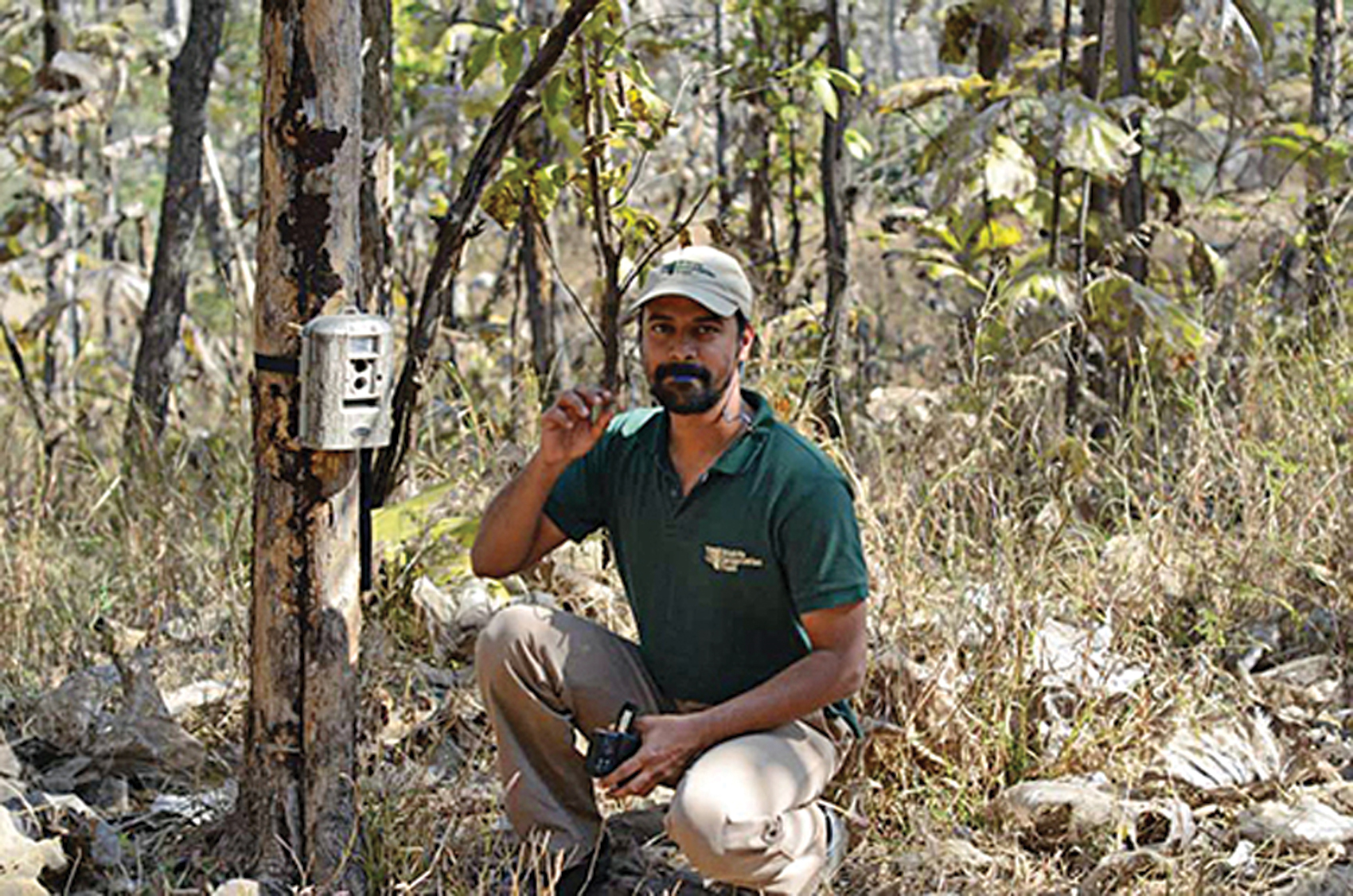 The Habitats Trust is working to build a knowledge base of technologies and infrastructures to aid in nature conservation. Photo: Vishal Bansod.
The Habitats Trust is working to build a knowledge base of technologies and infrastructures to aid in nature conservation. Photo: Vishal Bansod.
It’s interesting that THT’s focus is on lesser-known species conservation.
Yes! bite-sized actionable tasks help us work for the larger picture, without losing sight of the foundation upon which our biosphere rests. Nature is complex and umbilically interconnected. The focus on flagship and umbrella species over the past several decades has secured some of India’s most critical ecosystems and species. But the time has come to dive deeper into the ecological web to understand and protect the little things in life, without which a natural equilibrium cannot be maintained. Our aim is to create the impetus for climate resilience, ecological and water security.
THT was launched in 2018. Are you satisfied that the direction in which you are moving is on track?
I believe so, but we take nothing for granted and have a strict monitoring and evaluation protocol in place to measure impact and reflect on outcomes. We do not plan to create a gigantic organisation that competes with other organisations. We intend to mimic nature’s mutualism processes, through collaboration and concerted efforts that help fill gaps, build bridges brick by brick. All with a degree of urgency that conservation movements of yesterday may not have had to deal with because we are in a race against time.
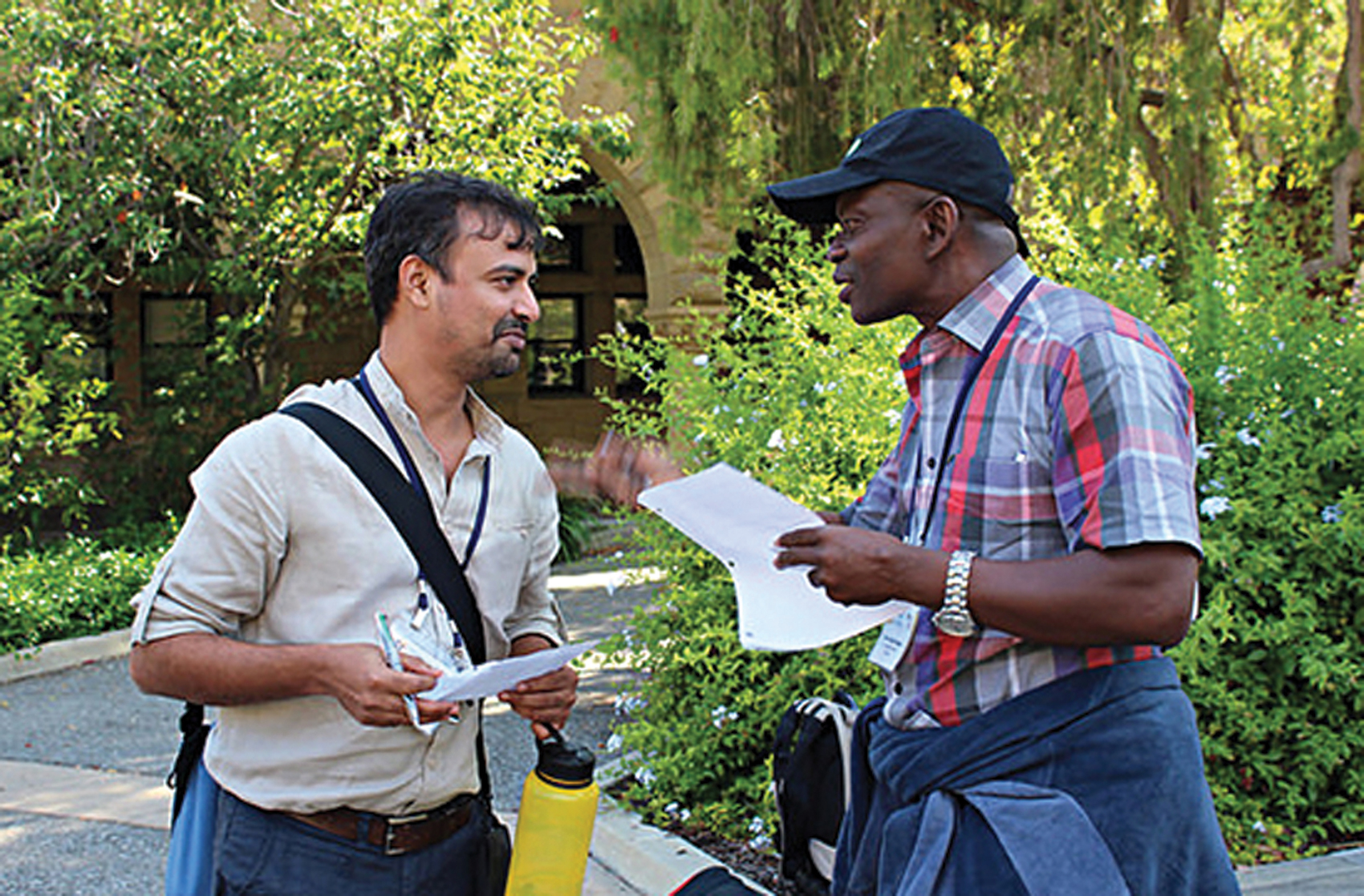 In 2015, Chavan attended a conservation economics course conducted by the Conservation Strategy Fund at Stanford University. Photo Courtesy:Rushikesh Chavan.
In 2015, Chavan attended a conservation economics course conducted by the Conservation Strategy Fund at Stanford University. Photo Courtesy:Rushikesh Chavan.
How would you condense your focus and strategy?
THT is building all its projects on four pillars of strength – strategic partnership, conservation technology, on-ground projects, and awareness generation. Our grants support both conservation organisations and heroes, and we go beyond financial assistance. Don’t be fooled by our ‘youth’, we are growing fast (see box, for examples).
THT’s future plans?
In the coming three years; we intend to collaborate with people/organisations to build consortiums across large landscapes in different states. We will soon be announcing the launch of several new programmes, and will showcase a short video series on lesser-known species. We look forward to exciting times ahead.
The COVID-19 pandemic? Will it teach us any lessons? And is THT working to drive a much-needed transformative change?
COVID–19 is a grim reminder that GDP as a measure for development is flawed and inadequate. The lessons it is teaching have come at a terrible cost. We don’t look upon sustainability as a ‘project’ or report, it’s a survival strategy for every segment of society.
Transformative change is the DNA of the organisation as it is in HCL, which scored India’s highest Environment and Social Governance (ESG) rating. And we are adding multiple dimensions to what is our evidence-based approach to conservation.
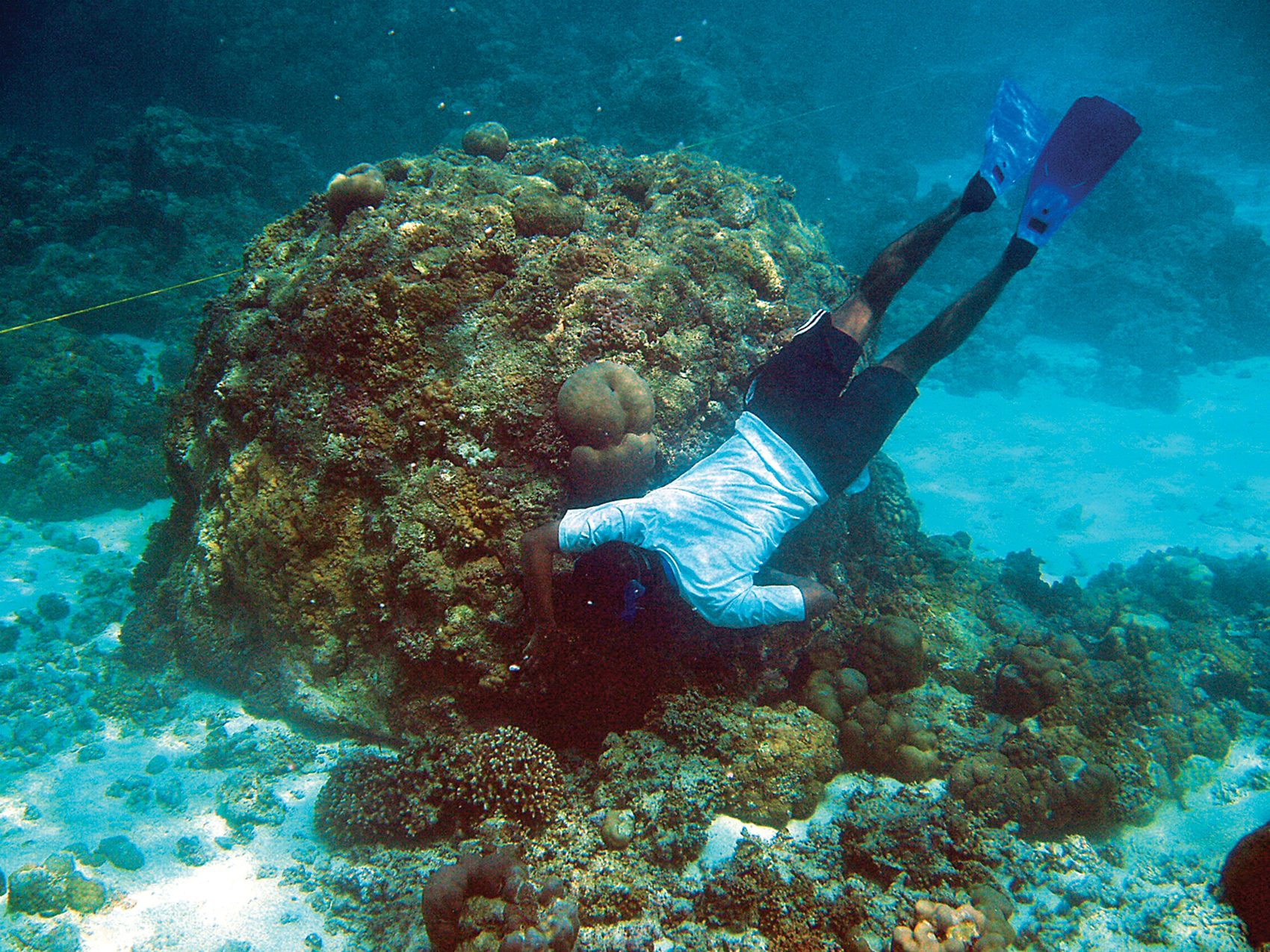 Freediving in the atolls of Lakshadweep, Chavan sets up (string) line transects to measure the distribution of organisms, while studying giant clam habitats. Photo Courtesy: Idrees Babu.
Freediving in the atolls of Lakshadweep, Chavan sets up (string) line transects to measure the distribution of organisms, while studying giant clam habitats. Photo Courtesy: Idrees Babu.
Is the government doing enough?
All governments, across the globe, need to do more, and India is no exception. But the current ‘Development Vs. Environment’ narrative will not cut it. We hope to work with conservationists to help navigate the tricky nuances of political economy and tackle the drivers of government decision-making. In our view, apart from consulting and educating, the worst affected victims’ voices need to be heard. This is probably the best way to get governments to take the right, decisive, actions.
The Dasgupta Review points out that economic expansion has come at a “devastating cost to nature” and calls for a new global commission on the economy and nature to help catalyse a global nature-positive economy. Do you see this happening?
It is not a matter of choice – we have to do all in our power to make it happen. This has actually been my personal focus over the past six years.
Through successful on-ground models we need to encourage and facilitate practical governance; to demonstrate that the Dasgupta recommendations fit the CPR framework. It’s not going to be easy, but we can and must create incentive structures in the devolution of funds, design contracts, and minimise trade-offs. At THT, we are determined to help Sustainable Development Goals (SDGs), among other things, possible at scale for all levels of economic activity.
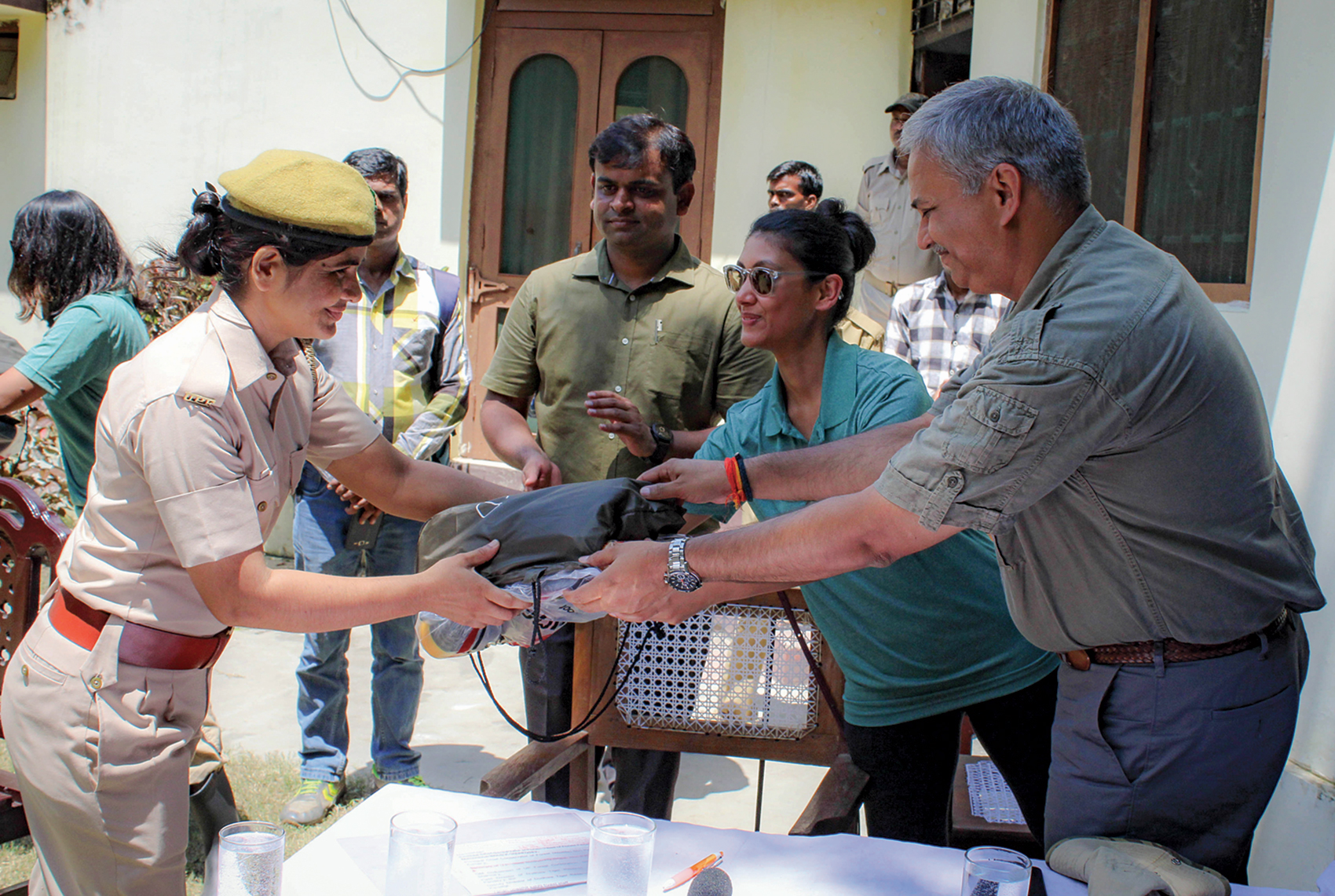 Roshni Nadar Malhotra, co-founder and trustee of THT, distributes field equipment kits to frontline forest officers of the Dudhwa Tiger Reserve in Uttar Pradesh. Photo Courtesy: The Habitats Trust.
Roshni Nadar Malhotra, co-founder and trustee of THT, distributes field equipment kits to frontline forest officers of the Dudhwa Tiger Reserve in Uttar Pradesh. Photo Courtesy: The Habitats Trust.
How can the average citizen push for such change?
To begin with by realising that they are not ‘average’ or ‘helpless’. Each of us can create a ‘butterfly effect’ (see how art is making a difference – Where Art Meets Conservation) for a desired outcome. Cities and citizens can reduce consumption. Even seemingly insignificant things like avoiding water waste at home can produce positive impacts. Reduce consumption, don’t buy products that contain palm oil, avoid plastic packaging… every step makes a difference.
You are right. Any message for the young?
If you want to protect wildlife don’t imagine you have to become a biologist. Conservation is a vast, multidisciplinary field and you have a rainbow of options. Do things you enjoy and are good at. The journey towards understanding the biosphere is an adventure that can enrich your life. Conservation can be integrated into every aspect of living. Nature has all the solutions you need. Just build your knowledge of the fundamentals of ecology and earth systems and with time, like magic, your world and your life will be enriched and you and yours will be safe.
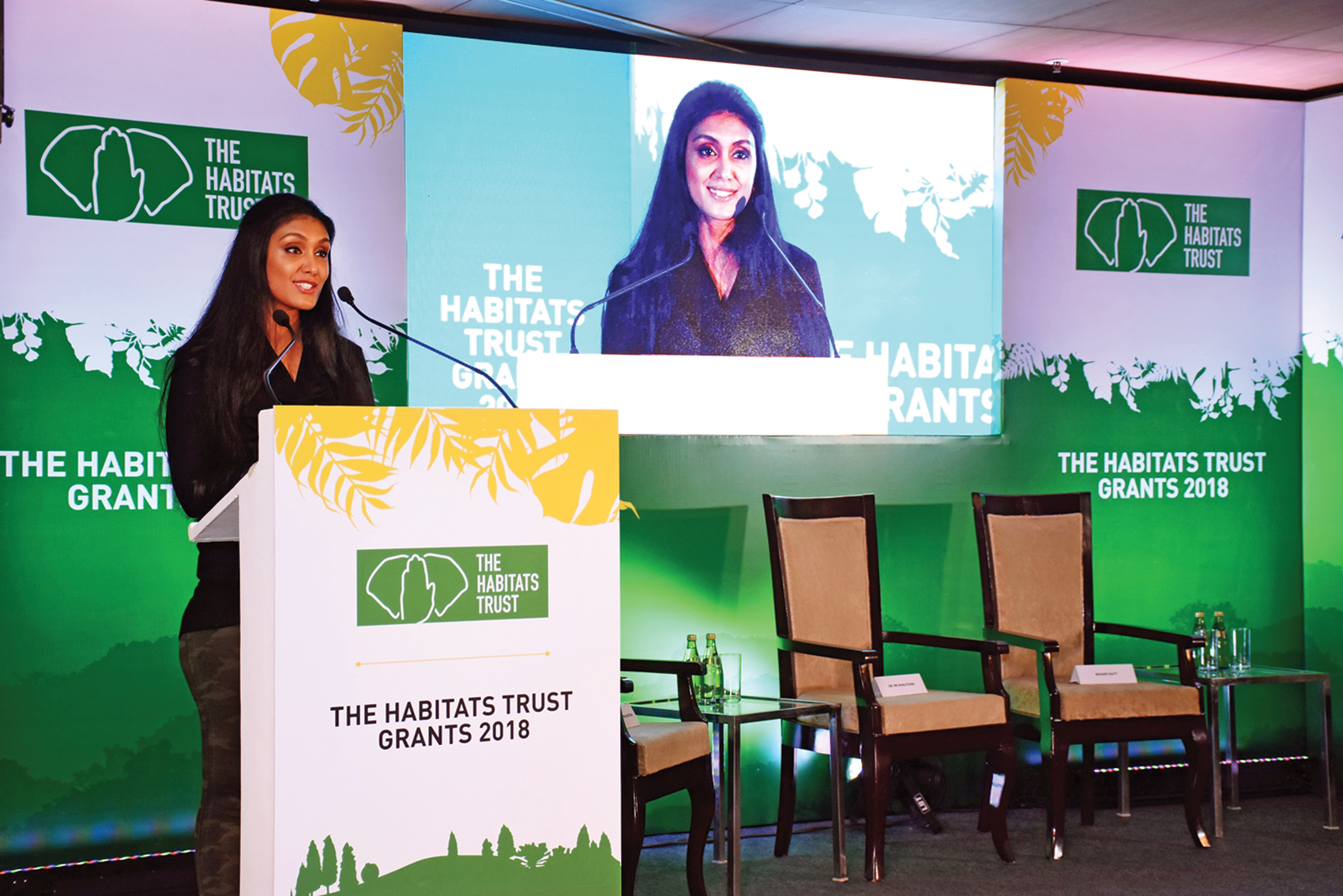 Malhotra addresses the winners of The Habitats Trust Grants in 2018. Photo Courtesy: The Habitats Trust.
Malhotra addresses the winners of The Habitats Trust Grants in 2018. Photo Courtesy: The Habitats Trust.
The Habitats Trust (THT) supports M. Suraj’s decade-long efforts to protect Chhattisgarh’s lush forests and wildlife. THT aims to address the poaching of prey species with technological tools and data driven methods. We hope to bring an evidence-based approach to his work, greater efficacy and long-lasting impact.
We are also active in the Dudhwa landscape, one of the last refuges for the hispid hare. Our on-ground work here has grown from supporting Forest Department field staff to a more integrated conservation approach of this lesser-known species.
We are also working on a repository of visual documentation for education and awareness. Our commissioned series on threatened species ‘On the Brink’, recorded 18 species over two seasons, and won the best film documentary at the International Nature Film Award Gödöll 2021.

_C-1920.jpg)




